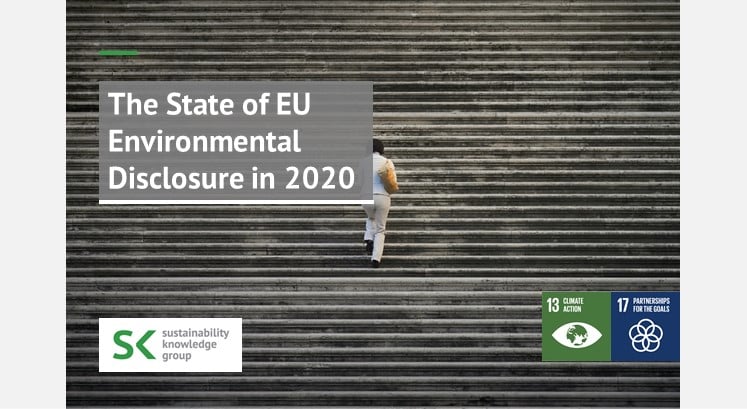Since EU Non-Financial Reporting Directive (NFRD) came into effect in 2017, some of the European Union’s large companies are required to prepare a non-financial statement containing information relating to at least environmental matters, social and employee-related matters, respect for human rights, anti-corruption and bribery matters. Companies should disclose a description of the policies, outcomes and risks related to those matters and should be included in the management report of the undertaking concerned.
In 2020, European companies published their third annual statements under the NFRD, and the first since the release of the European Commission’s guidelines on reporting climate-related information in June 2019. The guidelines define the relationship between NFRD and Task Force on Climate-related Financial Disclosures (TCFD) and outline how companies could integrate the two disclosure requirements.
With support from the European Union’s LIFE program, CDSB conducted an in-depth review of the 2020 Environmental Disclosures of 50 of the largest EU-listed companies. “The state of EU Environmental Disclosure in 2020” report assesses the effectiveness of environmental and climate disclosures in meeting the NFRD purpose of increasing the relevance, consistency and comparability of company reports to support stakeholders in making informed decisions on sustainable development. NFRD also supports the corporate reporting process by providing case studies, good practices and tips.
The state of EU Environmental Disclosure in 2020
The report showed progress in disclosure over the past three years, as most large EU companies now provide disclosures against NFRD’s core categories. However, TCFD aligned climate reporting and disclosure of environmental issues remained insufficient. The report shows that some aspects of disclosure did not improve compared to 2019, as the strengths (Policies and due diligence, Business model, KPIs) and the main weaknesses (TCFD, Principal risks, Materiality) remained the same.
Besides disclosures related to climate change, the report also considered integrating other environmental aspects, including information on risks and impacts related to water, biodiversity, deforestation and forest degradation. The report showed that nearly all companies report climate change and water, while disclosures on other environmental issues were less prevalent. Lower levels of reporting on these aspects indicate a lower maturity in disclosure facing companies which should be addressed.
Address problems and solutions
The research highlighted that issues in integration of TCFD, clarity and specificity of principal risk disclosures, application of a clear materiality definition still remain. The findings demonstrated that often the quality of disclosures were insufficient to fully understand the companies’ impacts, risks, or strategies on environmental issues and enable effective decision-making. Companies still do not provide enough information to investors about effectively allocating capital towards a low-carbon transition at scale. Inclusion of TCFD recommendations in the NFRD should ensure that this lack of information is addressed, and companies must provide the necessary transparency.
- Companies should continue to improve disclosure of these aspects, to provide the information needed to align investments within the EU to a sustainable, low carbon, activities for the long-term.
- Companies must also consider forthcoming reporting requirements from other pieces of EU legislation to provide complete and cohesive disclosure.
- The upcoming review of the NFRD by the European Commission, and the explicit inclusion of TCFD climate-related disclosure into the Directive, play a major and important role in improving the quality, comparability and consistency of disclosures.
The report also gives some tips to business owners on best practices for reporting on environmental issues:
- Be clear on the specific environmental topics that are material for the business, providing a clear description on the nature-related dependencies of the business model, in line with the Natural Capital Protocol
- Consider the location of specific environmental dependencies and impacts, within the business’ direct operations and value chain, to identify material topics. For example, water-related disclosures should consider in particular areas of high or very-high water stress
- Clarify the accounting methodologies and definitions of key terms (e.g., water consumption), referring to existing methodologies, or frameworks
- Utilise the SASB industry-specific standards and CDP questionnaires to inform the selection of comparable and consistent metrics to report upon different environmental topics. Where impacts or risks are identified for particular ‘hotspot’ areas, for example regions of high-water stress or biological sensitivity, disaggregated data should be provided, alongside narrative to explain the dependencies, risks and opportunities connected to these specific aspects.
With limited time left to achieve the 2030 Agenda for Sustainable Development, there are still significant gaps in disclosure against TCFD recommendations. There is a need for a more integrated approach and consistent disclosures in disclosing environmental material information.
Photo by Vidar Nordli-Mathisen on Unsplash

